|
One of many things that has changed at 3E Health with the Pandemic, is that we have made the switch to podcasts! So welcome to our new podcast, Learn Love Play. You can find us on Anchor and Spotify. We'd love to hear your feedback, here or at [email protected]
Click to set custom HTML
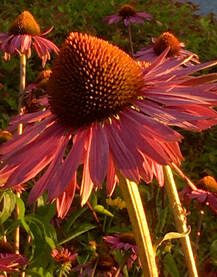 By Karen Janzen In these uncertain times, I’ve been thinking a lot about what matters most with our children, our students, and ourselves. And, hands down, experiences of love is what matters most in life in general. Without experiences of love, life becomes meaningless, and disease creeps in physically, socially, emotionally, and spiritually (although I would argue that the experience of love itself IS spirituality). I’ve spent the majority of my life thinking the same way most other people would about experiencing love: as something that may initially come from parents, then is found romantically in partner relationships, and is often also experienced through offspring and extended family. If I talked to a group of teenagers about experiencing love, 99% of them would think of romantic relationships, and more specifically, they would think of sex. This is because of our patriarchal/colonial orientation to life, compounded by millenials (+younger generations) growing up watching porn as their primary example of “love” (which porn typically teaches hatred, disguised as ‘love’). This is also part of what I call “Toxic Health Syndrome” (see previous blog post). But love, romantic and other varieties, can’t actually exist without starting from self-love. When we don’t start from self-love, we’re probably unknowingly starting from some insidious variety of hatred that pervades our western culture. My 3E Health Co-creator, Chad Oatway, and I have spent a lot of time thinking deeply and creatively about how to legitimately teach kids/people/ourselves to engage in healthier life behaviours, in body, mind, and relationships. There are all kinds of motivational approaches we’ve explored and considered. But ultimately it always comes down to forcing ‘a learning experience’ or ‘the growth mindset’ onto students who aren’t ready for that experience, because they don’t have a centre of self-love to grow from. If you think of the metaphor of growing plants in soil, if the soil is toxic, the plants can get perfect amounts of sunlight, water, or even easy listening music. But they’re not going to grow if they’re rooted in toxicity. But is self-love something that can be taught? I don’t think so. At least not didactically. I think it's something that has to be experienced personally and repeatedly until it's established and starts growing everything from creativity to motivation to curiosity and achievement, and the list is endless. But the big bang that starts the reactive chain is self-love. And once the chain reaction of experiencing self love is set off, THEN we can teach tools for resiliency, which artist, Lindsey Sterling brilliantly captures in the lyrics of her song, “What You’re Made Of”: Burned out with the fire in your eyes Can you imagine your students having the capability to say those words to themselves? Or even look back at the year they were in your classroom, and learned to connect with their power source of self-love?
But when we try to teach self-love head-on (didactically) it falls short. Instead we need to create the conditions for self-love to be experienced, including being aware of our own self-love experiences. And from there we can essentially teach ‘how to rise’ and ‘how to fight’ (using Stirling’s inspirational imagery). Our job as parents and educators is to support our kids (and ourselves) in creating an inventory of self-love experiences, so we know where we’re growing from, and we’re able to grow what is legitimately, beautifully, us, and not an extension of toxic cultural expectations. These experiences of self-love are where meaning comes from. It is also the crucible of resilience. Creating the conditions to experience self love is way too broad and deep to cover in one post (or one book). So this school year my professional theme is going to be exploring how to create the conditions for students (and staff, and families) to consciously experience self-love. I’m going to break it down into several blog posts, interviewing lots of my educational colleagues on their expertise along the way. My/our (Chad is in on this too) next posts will be on:
My goal is to produce a kind of lesson plan for each one of these that could potentially be implemented in classrooms, or as a family activity to support all of us with connecting with self-love. (And to do it without getting kitschy!... I'll deal with the kitsch around this topic in my next post.) I really hope you can join the conversation. I want to hear your insights too! Toxic Health Syndrome - Why It’s Surprisingly Challenging to Engage in Behaviours That Nourish Us3/10/2020 By Karen Janzen I was waiting in line for the holiday dinner buffet at a work party with many of the colleagues I had been in the trenches with on mental health initiatives this year. Most of us were pretty impressed by the spread, and our conversation rapidly turned to phrases like “cheat day”, “I’m gonna be bad…” and a disgusted, “I have this today, and two this weekend; I HAVE to get to the gym tonight.” Since we had worked together on many mental health initiatives, I steered the conversation toward the benefits this food would do for our stressed minds, like the tryptophan in the turkey is a precursor to serotonin, a neurotransmitter that supports mood balance. The brussel sprouts have phytonutrients that reduce inflammation, fight cancer, and help control blood sugar. The carbs in the potatoes produce dopamine. Sweet potatoes also control blood sugar and are high in antioxidants… Only I didn’t get past the brussel sprouts when I was shut down with, “Please, Karen! Just let us enjoy this!” …which I thought was a really odd comment considering I was mindfully appreciating the good the food was doing for us, while the other professionals around me were rolling their eyes, anticipating shame, engaging in self loathing, and a toxic ‘health’ mindset. …Which made me wonder, how are we supposed to engage in health education when our experiences around health are largely constructed around a capitalist driven, patriarchal-colonial focused toxicity? 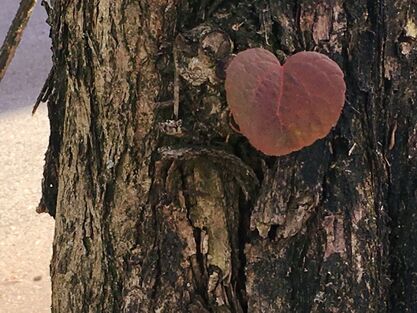 We need to name and know this permeating, damaging imposter, disguised as health, so we can better identify when our thoughts and actions are serving something else that isn’t self-love… We need to name and know this permeating, damaging imposter, disguised as health, so we can better identify when our thoughts and actions are serving something else that definitely isn’t self-love… something that’s making us and everyone around us sicker instead of stronger. I’m going to call it, “Toxic Health Syndrome”. Toxic Health Syndrome (or THS) describes the pervasive, targeted, and systematic poisoning of our natural intuition and experience around what is good for us and why. It leads to the weakening of connection with self-love, others, and meaning in life which can cause depression, anxiety, addiction and potential psychological interference with the body’s ability to heal. Toxic health syndrome is transmitted largely through media, is reinforced socially, and becomes more serious with a weakened sense of self awareness. In her 2019 New York Times opinion column, 'Smash the Wellness Industry', author Jessica Knoll describes wellness as “this poisonous relationship between a body I was indoctrinated to hate and food I had been taught to fear.” She says, “at its core, ‘wellness’ is about weight loss… preserving a vicious fallacy: Thin is healthy and healthy is thin.” Knoll goes on to tell the story of her return back to actual healthy thinking when she visited the nutritionist behind the ‘intuitive eating’ movement. Knoll shares the moment of paradigm shift when her nutritionist asked her if she could think of her larger-than-ideal appetite as a gift. After two years of work allowing her thoughts around health to heal (intuitively) she reports, “I no longer define food as whole or clean or sinful or a cheat. It has no moral value. Neither should my weight, though I’m still trying to separate my worth from my appearance. They are two necklaces that have gotten tangled over the course of my 35 years, their thin metal chains tied up in thin metal knots”. And there’s where I see the primary barrier to broaching health with students (and ourselves and each other). THS motivates many of our healthy pursuits from a place of shame, hopelessness, or insecurity, making it nearly impossible for us to differentiate between health & toxicity. For some educators it evokes a proverbial roll of the eyes, followed by a couple of random stabs at ‘healthy activities’, usually solely focused on the physical body, and then gets shoved back into the closet. Or it gets relegated to the ‘experts’ and we, the human whose condition and experience is at stake, become a bystander in our own lives, while the expert tells us how it should be. And because so many of us have gone so many rounds with THS, we engage in numbing activities before, during, and after a healthy activity to avoid the THS associated shame, and that numbing prevents us from engaging in bio- psycho-social-spiritual benefits that come from mindful nurturing of ourselves. 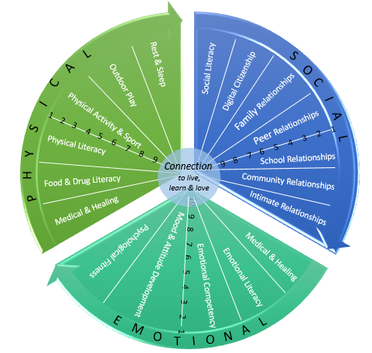 How do we begin to untangle Knoll’s proverbial knotted chains around our neck? Dr. Daniel Amen, well known brain researcher, author, and psychiatrist outlines several steps integrating the brain, circulatory system, gut, outdoors, psychological fitness, relationships, and many other components we’ve included in the 3E Health Connection Wheel. Specifically Dr. Amen cites the first step toward his “Revolution in Brain Health” as shifting from a disease mindset to a healthful mindset. His second step is to “fall in love with your brain”. This is the touchstone from which any true health nurturing begins. My experience is that “self-love” (to legitimately love yourself) is critically foundational, but many of us skip over it because we don’t know how to get there (especially when we’ve been raised in a culture of scarcity, less-than, and particularly for vulnerable populations, self-hatred). 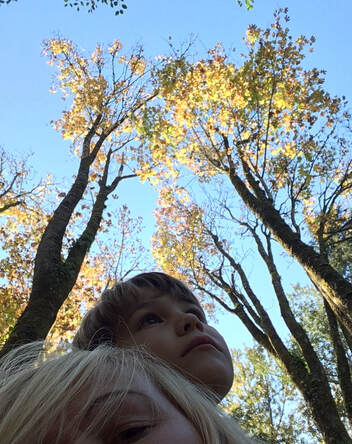 I have to admit, I spent a lot of my thirties trying to find the pathway to “loving myself”, but it always ended in THS, and me attempting to earn my worth. The first time I actually engaged in true self love was at the beginning of a difficult, complicated divorce (are there any simple ones?) Ironically my best friend was going through divorce at the same time. She shared some sage wisdom she had already gleaned from a trusted advisor. Coming from our common faith background she said, “There’s only three questions you need to ask: 1) What is the most loving thing God would want for me right now? 2) What is the most loving thing I can do for myself? 3)What is the most loving thing I can do for my child [or family]?” Regardless of our faith and/or scientific affiliations, or absence of, most people can agree that love is the energy that creates and unites all life. We need to get in touch with that love and begin to approach the well-being of our mind/body from an origin of love, not from one of lack or disgust. It doesn’t matter how that source of love is identified, the important part is that we’re able to connect our hearts to it, and start from there. As educators and/or parents, we need to examine our own ability to mindfully experience self love and wellness first, before we transmit any more THS onto our students/kids. Start naming Toxic Health Syndrome when it comes up and talk about the most loving thing you do for your whole being, brain, heart, and body. Better yet, walk and talk priming your brain and body to experience self love in action. Where do you see Toxic Health Syndrome affecting your practice the most? References: Knoll, J. 'Smash the Wellness Industry' – New York Times https://www.nytimes.com/2019/06/08/opinion/sunday/women-dieting-wellness.html Amen, Daniel, MD 'Change Your Brain, Heal Your Mind with Daniel Amen, MD' Public Broadcasting System 2019-12-17 McGonigal, K. Five Surprising Ways Exercise Changes Your Brain - Greater Good Science Center https://greatergood.berkeley.edu/article/item/five_surprising_ways_exercise_changes_your_brain?utm_source=Greater+Good+Science+Center&utm_campaign=2b4172741b-EMAIL_CAMPAIGN_GG_Newsletter_Jan_9_2020&utm_medium=email&utm_term=0_5ae73e326e-2b4172741b-52139255 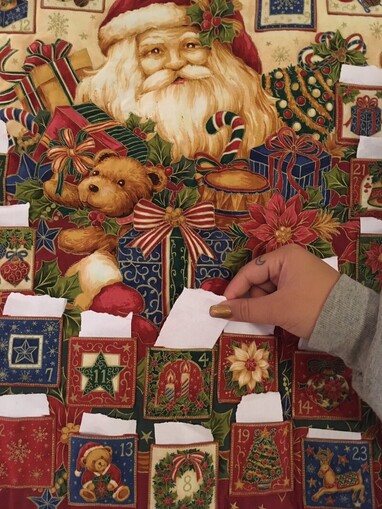 By Karen Janzen Chocolate. I love it and I feel love, joy and peace when I eat it (because it’s a fast & easy way to release dopamine in my brain). Approaching the holiday season, advent calendars have always been part of my family’s traditions. When the chocolate ones came out in the 80’s, advent calendars became my chocolate ritual, increasing with more sugar, fat and chocolate each day until Christmas Day (or Christmas Week, really) exploded in a dopamine blizzard in my mind, leaving me sluggish and sicker, and dependent on sugar to maintain daily functioning. So when unpacking my Christmas things this year, I found a quilted advent calendar I received as a gift and I began wondering what I should put in each of the tiny squares. Chocolate. Obviously! But as I began pondering the price of my favorite chocolate, I began calculating the negative effects that 24 days of chocolate could have on my health, and how quickly I careen off from one chocolate a day into glycemic oblivion. I began to wonder if there was something different I could put into the advent squares that would feel good AND improve my health. And that’s when I realized that advent calendars are a fantastic tool to begin experimenting with the 3E Components of Health in small ways that FEEL GOOD every day. They can be used to achieve improved social, emotional, and physical health by individuals, families, classrooms, or like-minded groups. If the 24 days of advent seem too onerous, the activities below could also be adapted into “12 Days of Christmas” or a “New Year-New You” January activity. Or you could stick with the advent calendar platform, but take out the holiday theme and insert a spring theme, etc. If using this tool with younger students it might be wise to have one advent calendar for the whole class to work on together. If using with older students, they can create their own advent calendar, possibly in collaboration with an art, textiles, or woodworking class. Here is MY list of 24 Fun/Feel Good ways to experiment with improving health. You can start with these today by printing them off and cutting them up into strips, or make up your own! On my list I decided to sample from at least 1 of each of the Components of Health, which you can see a full list of under the “3E Health Model” tab in 3ehealth.org . 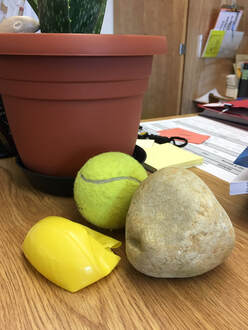 By Chad Oatway Like many Canadian’s, I was taken away by Bianca Andreescu, the young 19 year old tennis player from Mississauga, Ontario who won the US Open. As many looked at what she accomplished and her physical skill I began to see so much more to this story than the outcome or natural talent she possessed. So how does a 19 year old rise to the top of a professional sport? Listen to her talk. “There are ups and downs; that's part of tennis. But I'm up for the challenge” says Bianca, and there it is a seemingly simple mindset that is self-aware, reflective, and focused on the process of success. I am sure parents, coaches, mentors, a community, and so many more played a role in her development of this mindset, but ultimately she is the one that owns her mind. Teaching our youth to recognize ups and downs in life and embracing challenges is anything but simple. Self-awareness starts in the present moment and as such needs to be brought to focus each day in the classroom and at home with youth. A simple way to start this and develop this each day with students is for them to first look at who “I am going TO BE….” today. How do you Bounce? Is one of the first health lessons I have with my students, which is always driven by student questions of why I have a rock, tennis ball, and a squashed ball sitting on my desk. I give the class the tennis ball and students are always quick to play with the ball passing it around, dropping it, and just keep playing with it with smiles on their faces. The rock not so much so, as students are just scared of the rock (commonsense warning: do not let them throw a rock around in class). The flimsy ball they will start to play with, but quite quickly I squish it in front of them and they no longer enjoy playing with it anymore. Usually at this point someone will ask why are we playing with a tennis ball and what is the point of this after I squish the ball. And I say: Which ball do you want to be? The balls on my desk are the metaphor of people we see in this world and hopefully the person we all want to be. The rock is the fixed mindset who has shut people out and pushes people away. The squashed ball is the hopeless mindset who gives up and has lost their sense of control and choices they have in their lives. Finally, the tennis ball, the growth mindset that embraces challenges and knows that effort towards a process will allow them to bounce back when obstacles get in their way. No one can deny the fact that their will be a time where we may feel beaten down in life. But “how do you bounce” is the response that is up to us and students need to understand that this is ultimately our choice in life. Looking inward can be a very difficult thing for anyone and asking students to know “who am I…” in the most unstable time in their lives is a huge challenge. The instability that is in overdrive during adolescence and finding their bounce needs to come from outside as well as inside. The classroom, teenage culture, family members, friends, and society all have a part in how adolescents see themselves as students. These influencing factors come with values that can be tapped into. All students want to bounce (intrinsic influence) and all students have societal values (extrinsic influence) towards a growth mindset. Tapping into these influences in the present moment in school needs to take priority. Using intentions of who students want “To Be...” in the moment today is a powerful tool. Making students set intentions towards their bounce and values is the tool I try to use daily with my students. By having students write a daily intention that we post on a classroom board, I hope to trigger students to switch on their growth mindset. This ultimately is a strategy I use to build health connections in the brains of students using the 3E connection loop of healthy habits to empower social, emotional, and physical health. By Karen Janzen Like many people, I struggled with a significant fear of failure growing up. So much so that as I look back on my extended adolescence, I see that my life was paralyzed by my fear of doing things the ‘wrong’ way; making the ‘wrong’ choices… choices that were predicted to bring me pain and shame because they weren’t bulletproof for success. As a result I tended NOT to make choices (which is also a choice… and a symptom of anxiety) and I often became a bystander instead of doing what we were meant to do: engage in life with all we have to offer. Now that I’m a parent, I understand that this came from my perception of the caring adults in my life trying to protect me from pain and grief. And while I also feel that natural pull to insulate my child, I’ve discovered that true growth and resilience will never have a chance to manifest without learning to engage with our discomfort. Nowadays, we sometimes refer to insulating kids as ‘ preparing the path for the child’, which seems to be correlated with increased anxiety, depression, and lack of connectivity of almost every kind, except digital. What many of us know we really want to do (but aren’t sure how to proceed) is to prepare the child for the path. When we empower the child to be aware of the message discomfort is giving, how to learn from mistakes (mis-takes… take 1… take 2), we’re actually facilitating growth, and engaging transformation. In fact pain and mistakes, what shame-researcher Brene Brown calls ‘vulnerability’, are the keys to social, emotional and physical growth. If we aren’t able to show our true selves, at least partly, to our inner circle, we are likely to have weak attachment which can lead to higher rates of anxiety, dysfunction, and lack of fulfillment. If we aren’t able to name, own, and share our own emotions, we end up missing life’s key directional messages AND we end up numbed out (disconnected), potentially dependent on whatever we use to numb (drugs, media, sugar, busyness, etc), also leading to dysfunction and lack of fulfillment. Even our bodies work on this general concept, in that the only way to build new muscle is to tear the existing muscle (making it vulnerable, often causing mild pain) to build a transformed muscle that is stronger and better. This thing of being able to develop, or transform, because of, or in spite of, one’s mistakes, is what we call resilience. I remember the first conversation I ever had about resilience. I was experiencing anxiety over choosing my dream career of being a youth worker in what was deemed as one of America’s most dangerous neighborhoods, versus making the ‘right’ (perceived worthy) choice of an established safer career. As I expressed my angst to an inspirational friend, he reassured me I could find happiness/worthiness regardless of any one of my single choices because I showed significant resilience, and with that I’d always bounce back. I asked him what that meant. He said, “Resilience is not about how much you get sick or knocked down. It’s about your capacity to recover. Sickness and failure are going to happen in life. Resilience is when you don’t stay sick. When you don’t stay stuck in the failure. You just need to connect with the things and people that heal you, and you recover very quickly.”  3E Health is about experiencing this kind of robust resilience. It’s about preparing the person for the path; teaching the person how to connect with life experiences (a vulnerable place to be). It’s about when adversity hits us, physically, socially, and emotionally, we’re able to manage our growth, maintaining connection to a life that means something to us (which is also what we call spirituality). For the record, I’m now a divorced, solo parent to a special needs child, doing the health promotion that I love on a modest income. It’s often a challenging life that I wouldn’t necessarily recommend. But it’s a robust, resilient life that is drenched in meaning and connected experiences, glistening in love for my child, others, the world around me, and ultimately myself. And perhaps learning to love ourselves is the biggest growth of all. References: Brene Brown "The Power of Vulnerability" June 2010. Retrieved from https://www.ted.com/talks/brene_brown_on_vulnerability?language=en By Chad Oatway
Hating school as a child and adolescent seems to be a harsh word, but school was not fulfilling or rewarding in the classroom in a way that I believed school should have been. Sitting, listening, reading, writing, and regurgitating content is how I remember school. For me as a child, to me as a present day middle school teacher, knows that this type of learning is void of meaning and experiences. If any child, was like myself, they may think that they hate school and even more dangerously that they hate learning. As the old expression goes, “talk is cheap”, hence children and adolescents must experience connections in their learning over the emphasis on content. The world is fast paced and changing quicker than ever before. The cheap talk I remember as a student can still be present in many different ways in our society. However, this cheap talk has developed a cousin in the 21st century, which is the “cheap experiences” or instant gratification. Our adolescents now are having to navigate cheap experiences from cell phones, social media, gaming, selfies, heavily processed food, legalized and non legalized drugs, and the list goes on. With these cheap experiences wrapped in cheap talk it is hard to process what adolescents are going through, and even what many adults are struggling with in this digital age. Now tack on anxiety, depression, low levels of physical literacy, obesity, addiction, racism and all the other negative forms of “isms”, politics, and this race to the top has left our society stressed out and unhealthy in so many ways when looking at mental health and chronic illness. These effects have trickled down to our children and the future of our society. So where do we go now? Seeing my classroom through this lens of society could paint a negative picture, but I am an optimist. Having the opportunity to work with great educators and a lot of great youth have left me with this optimism and the ability to shape a positive future for our health. The goal is to move past cheap experiences and talk as educators, parents, and society to understanding that the experiences need to be meaningful, rich with ups and downs both socially, emotionally, and physically, for learning in the 21st century. Working with Bill Adair’s connection intentions to see “healthy emotional attachments are not taught, they are a product of actual connected emotional experiences” is why connection experiences for our youth are so important. This is the journey I as a teacher have made to be the most fundamentally important part of my teaching and classroom. Building a classroom based on connection experiences is the start of this process and through this the 3E Health model (see About 3E Health) focuses on social, emotional, and physical experience in the journey to health and wellness. 3E Health is the social, emotional, and physical connection of how health and learning can be brought together to enhance the brain's neurological pathways towards healthy connections. Looking at building the brain socially, emotionally, and physically needs to have challenge, failure, and stressors. Without stress in these three components, growth will be difficult. Day one of school for students is full of stressors that create social, emotional, and physical feelings within the body. Accepting that stress is taking place and is normal can be a powerful learning tool and does not need to be eliminated. Gabor Mate describes three universal factors of negative chronic stress and possibly chronic illness as, “uncertainty, lack of information, and loss of control”. These are the stresses that we should be addressing at the beginning of the school year. Taking away these negative factors associated with stress can empower students to find a comfort within themselves to embrace the challenges brought on by stress. Giving students consistent information and control over their learning needs to be meaningful in team building and the process of setting up a democratic classroom with high expectations. With using a play centred focus of 3E Health for these connection experiences that utilize stress is how I believe I can amplify connections and learning. Rephrasing Plato’s quote: “You can learn more about a person in an hour of play than in a year of conversation” to “You can learn more about [people in your class] in an hour of play than in a year of conversation.” Is why play will take a front and centered approach in learning, so students can learn about themselves and the people they will be working most closely with. In this blog, I hope to share my experience as an educator, coach, and parent working with youth to empower health. The 3E Health model focuses on social, emotional, and physical connection experiences of how health and learning can be holistically brought together is the center of how I am trying to build the brain. The ultimate hope is to aid in building healthy and actively engaged citizens for the future. References Adair, B. (2019). The Emotionally Connected Classroom: Wellness and the Learning Experience. Corwin. Mate, G. (2003). When The Body Says No: The Cost of Hidden Stress. Vintage Canada. |
Chad Oatway &
|
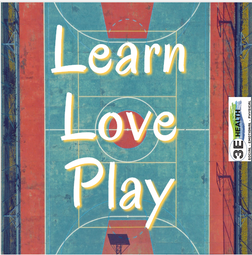
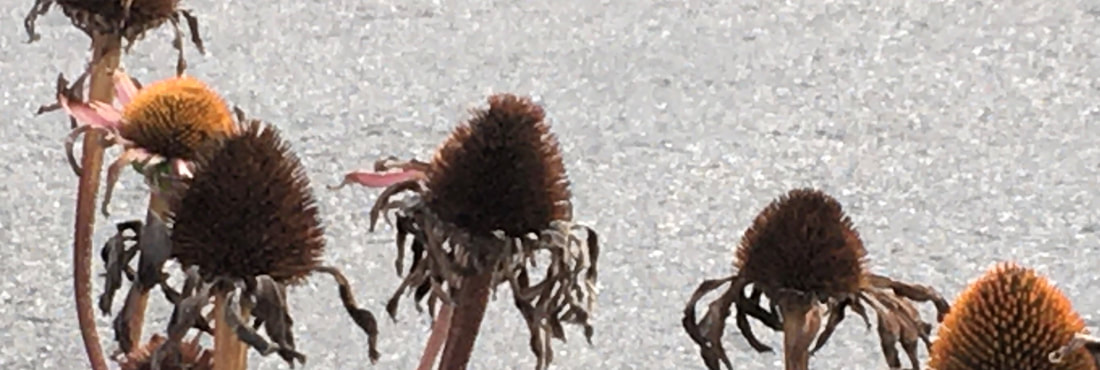
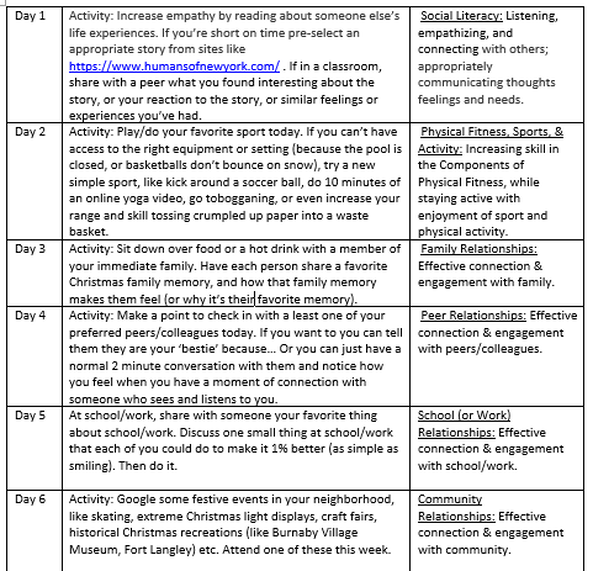
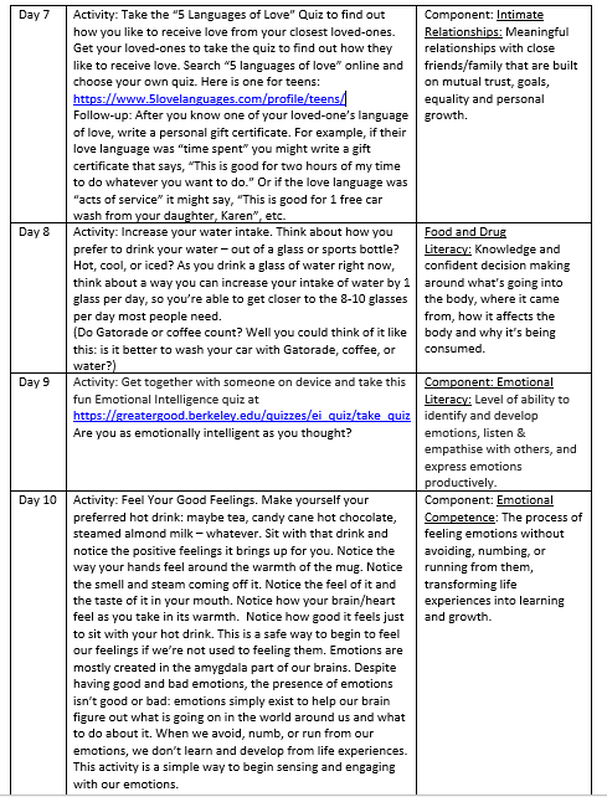
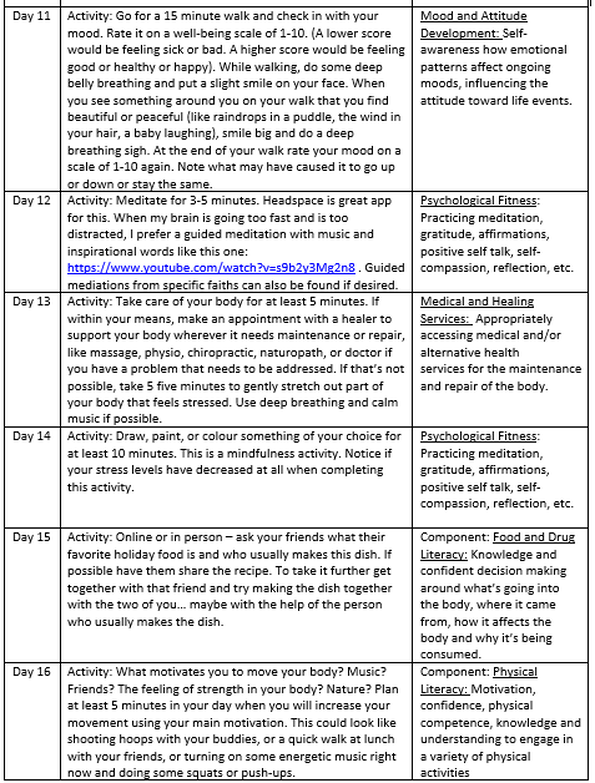
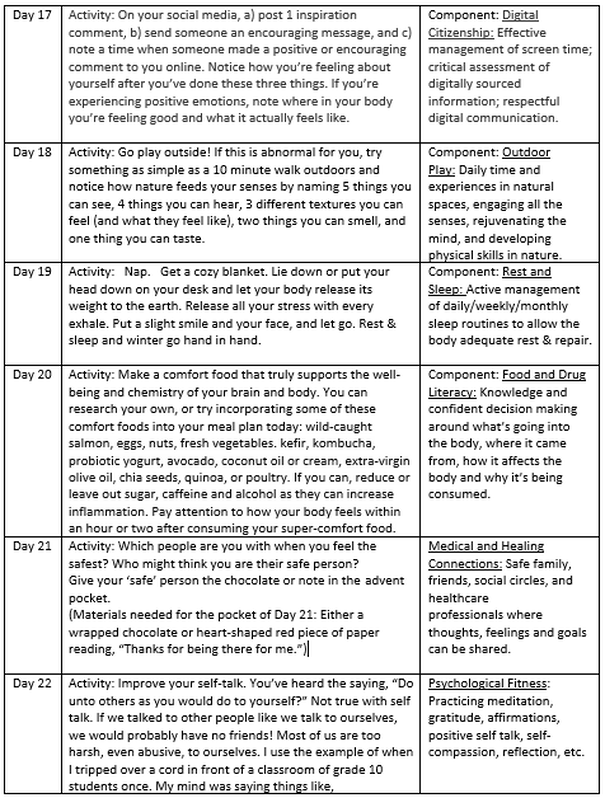
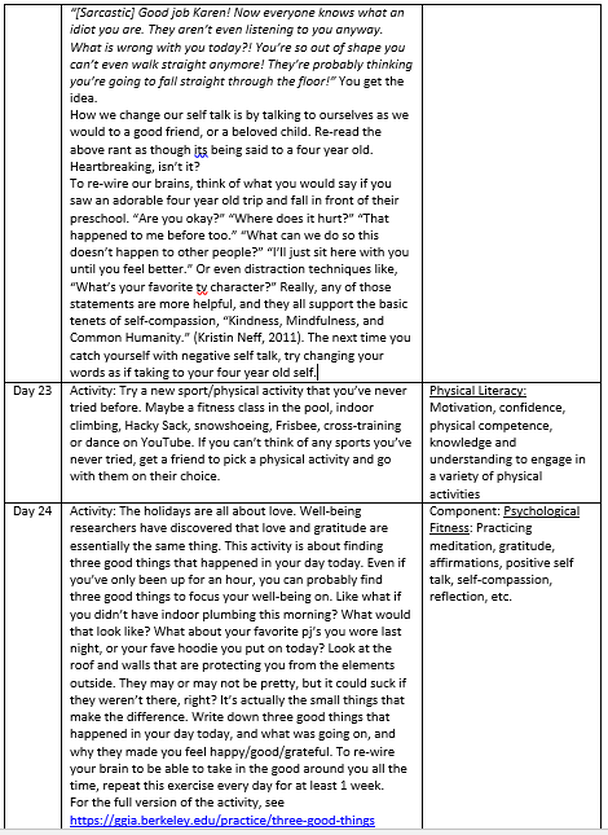

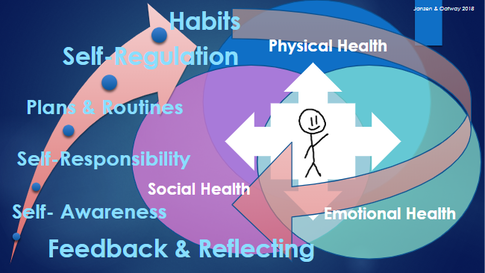
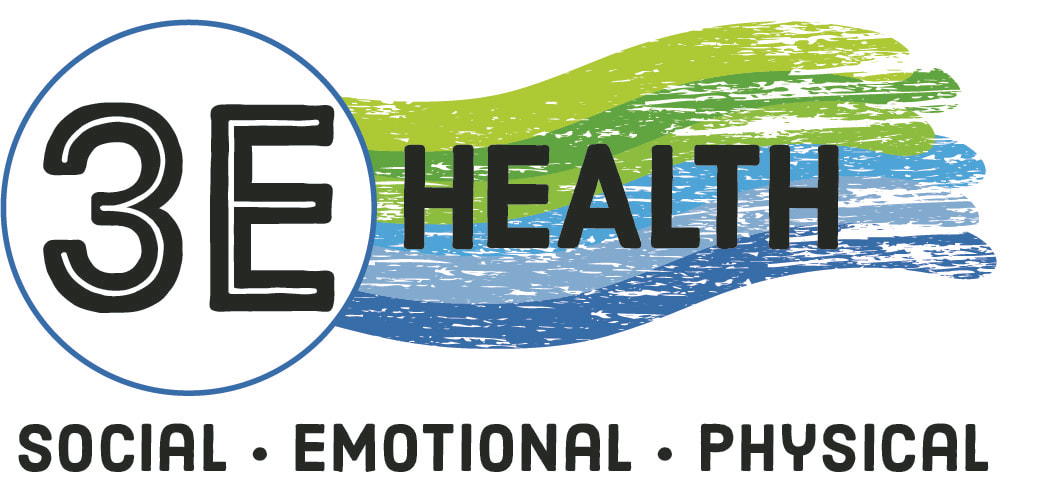
 RSS Feed
RSS Feed
